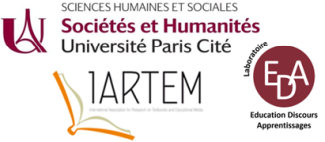This work analyzes Digital Educational Resources (DER) designed for teaching physical chemistry and chemistry at the secondary and higher levels. DERs are digital resources that facilitate and support the teacher's work. When the teacher incorporates them into their practice with the explicit intention of teaching, these resources become didactic.
Two DERs have been selected: RadioLab and pHPuzzle, designed and developed by the V-Lab-UFPE team in Brazil (Gomes, A. S. et al., 2021). These are free to distribute and can be used on mobile devices with or without internet. They are educational games for teaching/studying physical chemistry and chemistry that are linked to environmental problems. The DER pHPuzzle promotes interest in the concepts of chemical equilibrium: acid-base balance, pH and pOH, scales, indicators, dilution, and the neutralization of solutions for safe disposal. The game underscores the importance of caring for the environment by correctly discarding the solutions involved in it. The DER called RadioLab aims to engage the student in learning situations that allow them to establish relationships with everyday situations linked to the use of ionizing radiation (from the treatment of diseases and the sterilization of food and materials to the generation of energy). The content involved in this game includes: radioactivity; nature of radiation; half-life of a radioactive substance; radioactive waste; shielding of radioactive sources, which could be linked to situations of nuclear medicine, radiotherapy, radiodiagnosis, contamination, and environmental care.
The research adopts Adler's (2000) notion of a resource, according to which a resource is anything that serves to support the work of teachers in interacting with students. The notions linked to the Theory of Didactic Transposition (Chevallard, 1985) allow us to analyze the transpositive aspects related to the design, use, and operation of DERs, in addition to some didactic advantages and disadvantages that they present (Otero et. al, 2022).
The DERs were analyzed by adapting the categories proposed by Queiros, et al. (2022). Here we are interested in the didactic aspects, which are closely linked to the notions of chemistry and physical chemistry that can be taught with these resources. It analyzes: the integration of game-student knowledge, the use of school chemical and physical chemical concepts involved during the game, whether or not curiosity about the content is promoted, and the adequacy of these contents with the school curriculum. To a lesser extent, we consider some aspects related to gameplay, applicability, user experience, and also the design and visual representation of the resource.
Preliminary results
From the analysis carried out, it is concluded that, unlike the games mostly available on the Internet that attribute relatively little importance to knowledge, these resources use relevant and fundamental school concepts of chemistry and physical chemistry. These resources call for the study of the theories underlying the knowledge involved, especially if these theories are studied in the classroom with the help of the teacher. The analysis also shows the relevance of these resources for addressing issues related to the environment and its care, mainly with regard to the generation of environmental awareness. In the case of the pHPuzzle, the student is encouraged to discard solutions with a neutral pH, preventing them from reacting violently in order to preserve the environment, and in the RadioLab, the substances are discarded after being introduced into shielding boxes that have been designed to contain the ionizing radiation and avoid the damage caused by radioactive emissions.
The mediation present in the conception and design of the RED is complemented by the teacher's mediation, both in the choice of the resource and, for example, in the preparation of the laboratory work, the choice of the materials available to carry it out, the direction of the studio, etc.
Referencias
Adler, J. (2000). Conceptualising resources as a theme for teacher education. Journal of Mathematics Teacher Education, 3: 205-224. https://doi.org/10.1023/A:1009903206236
Chevallard, Y. (1985). La transposition didactique : du savoir savant au savoir enseigné, Grenoble : La Pensée Sauvage (2e éd.1991). [Traducida al español: Chevallard Y (1997) La transposición ́ didáctica. Del saber sabio al saber enseñado. AIQUE, Buenos Aires]
Gomes, A. S. et al. (2021). Função Resgate. Plataforma Integrada do MEC: Governo do Brasil, [online].Disponível em:https://plataformaintegrada.mec.gov.br/recurso/358857. Acesso em: 21 dec. 2023.
Queiros, L. M., Gomes, A. S., Pereira, J. W., Castro Filho, J. A. de, Santos, E. M. dos, & Silva Neto, D. F. da. (2022). Enigmas de Yucatàn: Recurso Educacional Digital para o Ensino de Geometria Espacial. Revista Brasileira de Informática na Educação, 30, 108-134. DOI: 10.5753/rbie.2022.2140.
Otero, P., Gazzola, M. P., Otero, M. R., & Llanos, V. C. (2022). Recursos educativos digitales para la enseñanza de las ciencias. Revista De Enseñanza De La Física, 34, 257–266.

 PDF version
PDF version
